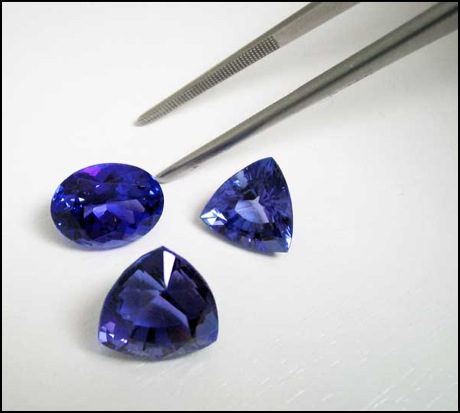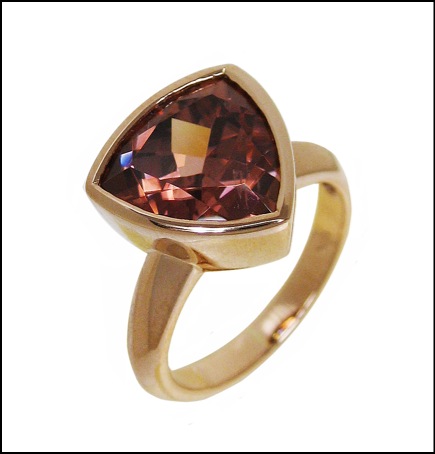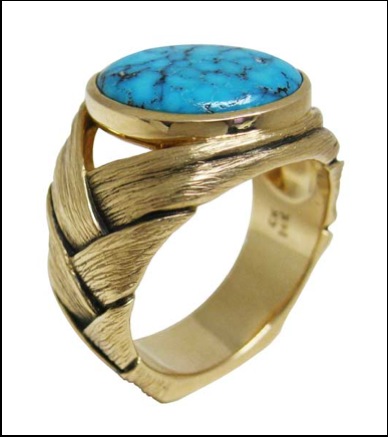Check out our Tanzanite, Zircon and Turquoise boards on Pinterest for more photos and info!

Unset tanzanites showing off their natural beauty.
Tanzanite
Tanzanite was added to the birthstone list by the American Gem Trade Association in 2002, the first gemstone added since 1912. Tanzanite is an exotic, vivid blue, kissed by purple hues. Tanzanite has the beauty, rarity and durability to rival any gemstone. It is the ultimate prize of a gemstone safari.
Tanzanite is mined only in Tanzania at the feet of the majestic Mount Kilimanjaro. Legend has it that the gem was first discovered when some brown gemstone crystals lying on the dry earth were caught in a fire set by lightning that swept through the grass-covered hills. The Masai herders driving cattle in the area noticed the beautiful blue color and picked the crystals up, becoming the first tanzanite collectors.
One of the most popular blue gemstones available today, tanzanite occurs in a variety of shapes and sizes and also provides a striking assortment of tonal qualities. Rarely pure blue, tanzanite almost always display its signature overtones of purple. In smaller sizes, tanzanite tends toward the lighter tones and the lavender color is more common. While in larger sizes, tanzanite typically displays deeper, richer color.

This Kim Collins ring features a rose colored zircon set in rose gold.
Zircon
In the middle ages, zircon was said to aid sleep, bring prosperity, and promote honor and wisdom in its owner. The name probably comes from the Persian word zargun which means "gold-colored." The fiery, brilliance of zircon can rival any gemstone. The affordability of its vibrant greens, sky blues, and pleasing earth tones contributes to it’s growing popularity today.
Zircon is mined in Cambodia, Sri Lanka, Vietnam, Thailand, and other countries. Because it can be colorless, green, blue, yellow, brown, orange, dark red, and all the colors in between, it is a popular gem for connoisseurs who collect different colors or zircon from different localities.

This ring by Chris Keenan is set with a turquoise cabochon.
Turquoise
Turquoise is among the oldest known gemstones- it has been mined since 3,200 BC. It graced the necks of Egyptian Pharaohs and adorned the ceremonial dress of early Native Americans. This robin egg blue hued gemstone has been attributed with healing powers, supposedly promoting the wearer's status, wealth, well being, and luck.
Turquoise is an opaque, light to dark blue or blue-green gem, the finest color is an intense blue. Turquoise may contain narrow veins of other materials either isolated or as a network, these can be black, brown, or yellowish-brown in color. Known as the matrix, these veins of color are sometimes in the form of an intricate pattern, called a spider web.
----------
In addition to
the above information from the AGTA and other sources, you
can find facts about these of gems and more at the
"Gems
and Gem Materials"
online course,
through the University of California-Berkeley's Department
of Earth and Planetary Science. The website is available
for the general public, and contains a wealth of
information for the budding gemologist and anyone
interested in learning more about gemstones. Hanna
Cook-Wallace has contributed to this site, which was
developed by Jill Banfield while teaching at the University
of Wisconsin.